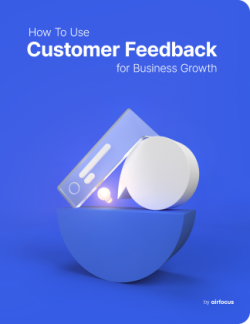HEART Framework
What is the HEART framework?
Definition of the HEART framework
The HEART framework is a methodology designed to bring a product team’s focus more in line with the customer experience. And help them better understand how changes can impact the user experience.
“HEART” is an acronym representing five core metrics, all of which are focused on the user and the ways they engage with the product:
Happiness: This metric is equivalent to user satisfaction and is generally measured by way of customer surveys, NPS scores, reviews, app ratings, and so on.
Engagement: This metric is all about how often users are coming back to engage with the product. You might measure this by looking at return visits.
Adoption: Lead-gen and acquisition is one thing, but how many users are actually completing your onboarding process? And how many of these are trying out the latest features? This metric tracks all of this and more.
Retention: Churn is a critical metric for SaaS platforms, and for good reason. The “Retention” element of the HEART framework is all about keeping your users, users.
Task success: It may not be as elegantly named as the others, but this metric is still a key ingredient to product success. It asks questions like, ‘How long does it take users to achieve a goal?’, ‘How many users are hitting error messages?’, etc.
The origins of the HEART framework
The HEART framework was originally described as part of a research publication by a team of quantitative UX researchers at Google.
Kerry Rodden, Hilary Hutchinson, and Xin Fu published Measuring the User Experience on a Large Scale: User-Centered Metrics for Web Applications in 2010. The goals of the HEART framework can perhaps best be summed up in a single line from the abstract for the research:
“There is a strong need for user-centered metrics for web applications, which can be used to measure progress towards key goals, and drive product decisions.”
The original HEART framework research goes on to explain how product goals can be mapped to metrics in order to improve the customer experience.
How to use the HEART framework
One of the biggest benefits of the HEART framework lies in its simplicity.
There really are no hard-and-fast rules governing how you apply the methodology to your business. So much so, in fact, that many teams won’t need to use all five of the metrics — perhaps just one or two of them apply to your product.
That said, one of the creators of the framework, Kerry Rodden described in a blog post the guidelines by which the team uses HEART at Google.
To apply HEART to a product you’re working on, you can use the “Goals-Signals-Metrics” process:
1. The first step is to consider the overall goals of the product or feature you’re considering as a team. The HEART framework can help ensure you stay specific to this. So, you might initially say “We want more users”, but what you’re really asking is for more user engagement or user adoption. As you run through your list of goals, consider how they fit into each of the HEART metrics.
2. Next, you want to map your goals to signals. These are essentially specific states which represent success or failure in one of the HEART categories. The best example is probably “Task success”: what behavior would users exhibit if they could/couldn’t perform necessary actions via your app?
3. Finally, you can take your goals and signals and filter them through into metrics. These can be measured directly over time and help you assess the progress you’re making with your user experience. For example, you might take one of your “Task success” signals and define it by the specific number of times a user hits a particular error message.

General FAQ

Glossary categories
All product feedback in one place

Experience the new way of doing product management







